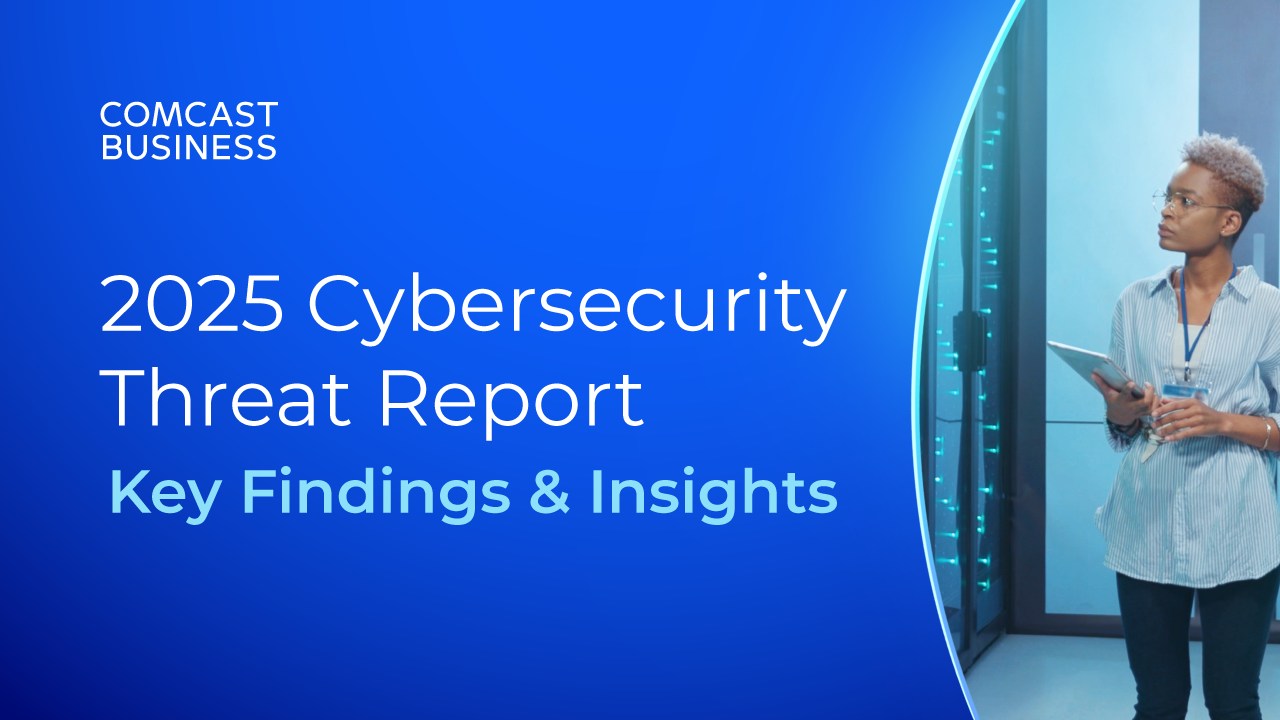Solution Architect Perspectives: What’s Next for Supporting your Hybrid Workforce

A year from now, will you be working from the office? From home? A little of both? This question is weighing on the minds of many right now especially businesses leaders and their IT teams. Regardless of the answers, businesses will need to make adjustments to their network and security posture in order to best support employees, regardless of their location.
We recently sat down with Bo Zhang and Robert Bridal from the Comcast Business solution architect team to learn more about the needs and challenges they are hearing from customers as they prepare for the next iteration of the hybrid workforce. Whether migrating, transitioning or expanding from an on-prem, network stack to cloud-delivered security services and networking, there’s a lot to consider in order to achieve diverse transport architectures that increasingly rely on broadband to meet the needs of the hybrid workforce.

The past year has thrown a lot at IT teams of all sizes. What are some of the top things you are hearing from those you work with?

Customers are hyper focused on the needs of their businesses and are coming to us for solutions. They do not make technology purchases until they see the business value. They are looking for solutions to help prevent things like cyberattacks from happening. In this challenging time, business continuity is everything. For this reason, IT managers need to determine the root cause of issues and provide network solutions that can assist.
The focus is also on ways to help businesses increase productivity. We are working with them to develop network solutions that can help with growth, reduce capEx, and integrate into their corporate infrastructures - all of which will create efficiencies in a hybrid model.
Despite the many changes and challenges over the last year, IT managers are focused on ensuring they are delivering value for their organization. And in a hybrid work model, this means helping the businesses run efficiently and as closely to how they worked when they were in the office as possible.

The hybrid work model appears to be the wave of the future. How are you helping customers make hybrid work a seamless experience?

Many customers are looking to solve this long-term. They are planning to support more of a working from anywhere model and in order to do this well, there is a lot to consider. When you have a couple of employees working from anywhere, it’s somewhat easy to resolve the challenges, but if you have a really large number of employees wiring from different locations, each location has a different underlay, different connections and different security risks. This all needs to be addressed as businesses are looking to offer a remote work option long-term. At the highest level, this starts with tighter integration with their corporate infrastructure in order to put the right network and security in place for scalability.
As the number of remote employees grows and the number of locations expands, security is the number one challenge. This requires a tight integration of the new security policies into the existing. For example, this can spur the need to incorporate the same Service Set Identifier (SSID) with the same manner of authentication. And with everyone working in different locations, the traffic will all be coming in from the internet. This traffic needs to be secured. If applications are cloud-based, that traffic needs to be secured as well, so there are a lot more variables to consider.
Overall, remote management of IT is also a huge challenge. With everyone working from different locations, that means that IT managers need to manage literally hundreds or even thousands of different locations and network connections. This is not easy, but there are ways to consolidate operations. In order to reduce risk, we have seen customers take a layer-2 authentication security approach. Some are taking it even further by not allowing bring-your-own-device. For this policy, all devices need to be whitelisted in order to get online. All access is authenticated and network access control systems are enabled in one place. To manage all of this, IT teams are integrating an SD-WAN system that includes UTM on top of it.
 The move to the cloud has brought with it a lot of convenience, but also a number of challenges. What concerns are top of mind for IT leaders when it comes to cloud adoption?
The move to the cloud has brought with it a lot of convenience, but also a number of challenges. What concerns are top of mind for IT leaders when it comes to cloud adoption?

The cloud environment is very dynamic and changing every day. This makes it critical to find the right partner to help you manage cloud access in order to find the best ways to reach other cloud providers. You need to find a network provider that works with multiple or all major cloud providers in order to properly secure the reach you’ll need. Your network provider should be able to help you determine the best path for your connections.
As a best practice it is often better to access through the network than through WiFi and home internet connection for security reasons. The direct-connect and express route gateway models that network providers enable are hardware based and best for hosting connections to very large customer premises devices. They are able to provide more power than a virtual, SaaS environment. They can also provide Internet traffic steering that can change the quality of end-to-end connections.
We are finding that the need to connect to legacy data that is not available from the cloud will remain a variable. There will always be a need for hybrid cloud data center systems. These applications tend to be foundational and are still needed to support the larger enterprise businesses and need to stay in non-cloud environments.

Now that organizations have made many of the adjustments necessary to become more digital, what are some best practices for achieving scalability?

The rapid shift to digital in order to support a more remote workforce and customer base brought with it many changes. The majority of which are proving to be agile enough for the long term. However, many IT managers are re-evaluating some of the temporary fixes and realizing the potential security holes that may have created.
Many organizations are finding that home office network connectivity is not enough for some of their employees and are considering a business class internet at home which offers the reliability and security they need to better replicate the in-office experience. The cost per employee can be cost prohibitive for some, but when re-evaluating the added costs based on security concerns and ongoing connectivity challenges, they may realize a more long-term value.
The existing VPN connections should also be evaluated to determine if it is enough to support the number of employees who will be tunneling in from outside the office network.
Hear from our solution architects on the unique considerations of supporting a hybrid workforce.
Locked Content
Click on the button below to get access
Unlock NowOr sign in to access all content on Comcast Business Community
Resource Center
Learn how Comcast Business can help
keep you ready for what's next.










